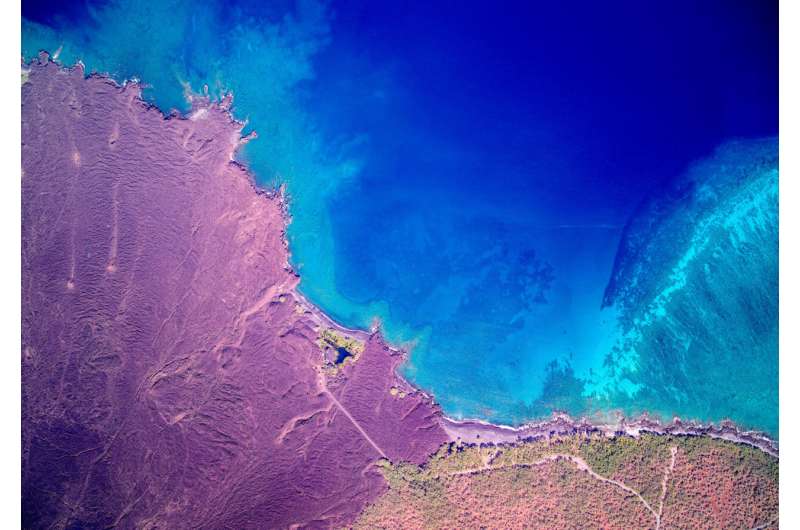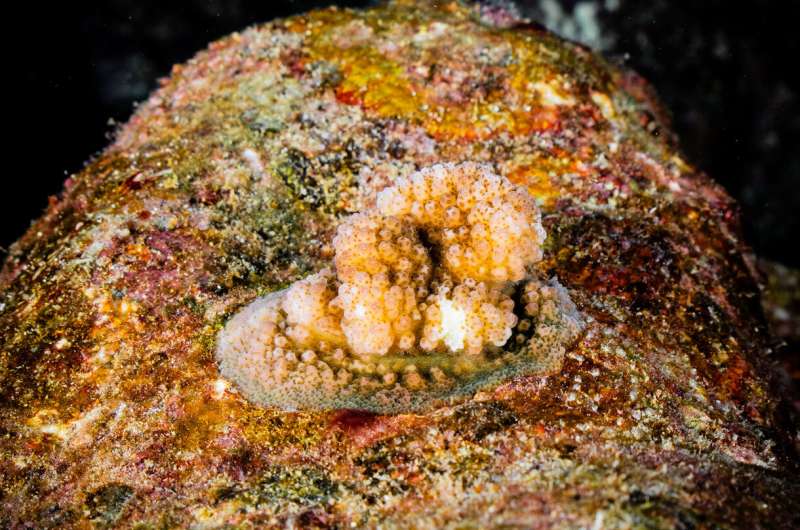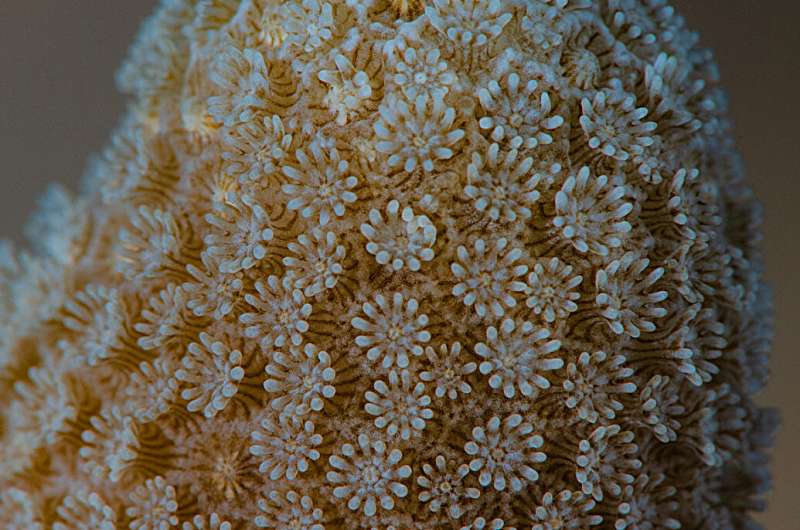This article has been reviewed according to Science X's editorial process and policies. Editors have highlighted the following attributes while ensuring the content's credibility:
fact-checked
peer-reviewed publication
trusted source
proofread
Protecting coral 'nurseries' is as important as safeguarding established coral reefs, new study shows

When imagining corals, the picture that comes to mind is usually a stationary one: a garden of rock-like structures covering sections of the ocean floor. Reef conservation efforts typically focus on preserving established coral and protecting them from known stressors such as pollution, overfishing and runoff from coastline populations.
However, new research near Miloliʻi in the southwestern part of Hawai'i Island shows that identifying and protecting marine ecosystems, both down-current and up-current of coral reefs, specifically areas where coral larvae are more likely to survive and thrive, is crucial to future coral conservation and restoration efforts—especially as reefs face increasing pressure from the devastating effects of climate change.
The research, completed by Arizona State University scientists and their collaborators, appears in the current issue of Proceedings of the National Academy of Sciences.
Rachel Carlson, an ASU affiliate scientist and the study's first author, along with Greg Asner, director of ASU's Center for Global Discovery and Conservation Science, and Robin Martin, associate professor with the ASU School of Ocean Futures in the Julie Ann Wrigley Global Futures Laboratory, collaborated on the project.
Carlson says this type of collaborative work—partnerships combining local, Indigenous knowledge and Western science—is crucial to mapping out a future that ensures the survival of coral populations.
"There's a lot of Indigenous knowledge about coral spawning and fish populations in West Hawaiʻi. In this study, we addressed an open question: How connected are coral populations between embayments along this coastline?" said Carlson. "What we essentially found is that the major factors in helping the coral keiki, known as larvae, settle down and survive are the nearshore current and the structure of the reef."

The study shows that the larvae more often settle in and inhabit areas with large boulders and uneven surfaces, or "chunky features," said Carlson, who is also a Chancellor's Postdoctoral Fellow at the UC Davis Bodega Marine Lab. Adult coral will spawn millions of larvae into the water column and those larvae prefer to settle in places with large knolls and boulders.
This discovery is good news: These kinds of seafloor features have been mapped via ASU's Global Airborne Observatory, a highly specialized aircraft that uses several types of remote sensing technologies to track both underwater and land-based habitats. This means that the researchers have the capability to help find and map priority reefs for conservation and restoration.
"This is foundational research in several important ways," said Asner, the study's senior author. "First, it gives us an understanding of the connectivity of different parts of reefs along our coastline and tells us the level of connectivity in the context of the birth, settlement, and growth of corals miles apart. Second, our unique remote sensing capabilities can identify reef sites where coral restoration could be most viable in the future. Finally, these findings provide a critical building block for future restoration efforts by our ʻĀkoʻakoʻa team and collaborators."
The group's goal is to preserve and restore vitality to Hawaii's coral reefs and coastline health.
"We as lineal descendants of the Miloliʻi area have always relied on the reef for our ʻOhana (families). Our reef is our sustenance and is of enormous cultural value to us," said Kaʻimi Kaupiko, president of the non-profit organization Kalanihale, which manages the Miloliʻi Community-based Subsistence Fishing Area (CBSFA) where the study took place.
Asner said the intertwined nature of reefs along Hawai'i's coastlines is crucial to consider in reef protection strategies. Narrowing in on one area without consideration for the reproductive corridors of corals, he said, would be akin to worrying about planting trees in a certain place and not thinking about the forest as a whole. This sentiment is echoed by Martin, who explained that reef connectivity is an underutilized tool in reef restoration efforts globally.
"In Hawai'i and worldwide, we're trying to figure out where we should place protections and restore areas to help reefs," Martin said. "This study is highly technical, but it needs to be part of that conversation and part of that work because if you aren't protecting the up-current reefs, you are cutting off important reproductive areas."

Martin said reef restoration could, for example, expand a protected area of reefs beyond just the spots that have more dense coral coverage on the ocean floor: Protection efforts would also be needed in the upcurrent path that the coral larvae traveled through before they settled in a new location.
Asner added that this research could very well help conservation efforts expand to much greater distances than have been achieved previously.
"These kinds of studies of connectivity, flow, and movement are needed because the west Hawaiʻi island coastline is longer than the whole circumference of any other island," Asner said. "We have a lot of degraded reefs along our coastline, so knowing where and how to help baby corals thrive is fundamental to the ʻĀkoʻakoʻa restoration effort."
"Our students participated in the coral study, and that also helped us to connect the dots between cultural knowledge and Western science," said Kaupiko. "The study supports our CBSFA by showing that our area is ecologically connected, and thus it needs to be managed and protected as one connected reef and coastline."
Through the long-standing community collaborations that have shaped the ʻĀkoʻakoʻa program, this coral reef work reflects both cultural knowledge and scientific research. This type of approach is crucial in places like Hawai'i, where a deep connection between coral reefs and people calls for research that serves them both.
More information: Carlson, Rachel R. et al, The effect of reef morphology on coral recruitment at multiple spatial scales, Proceedings of the National Academy of Sciences (2024). DOI: 10.1073/pnas.2311661121
Journal information: Proceedings of the National Academy of Sciences
Provided by Arizona State University





















